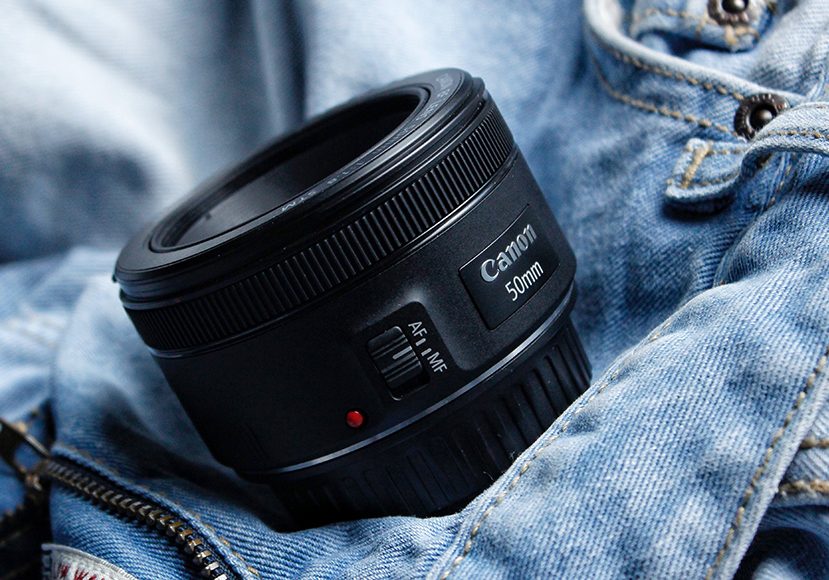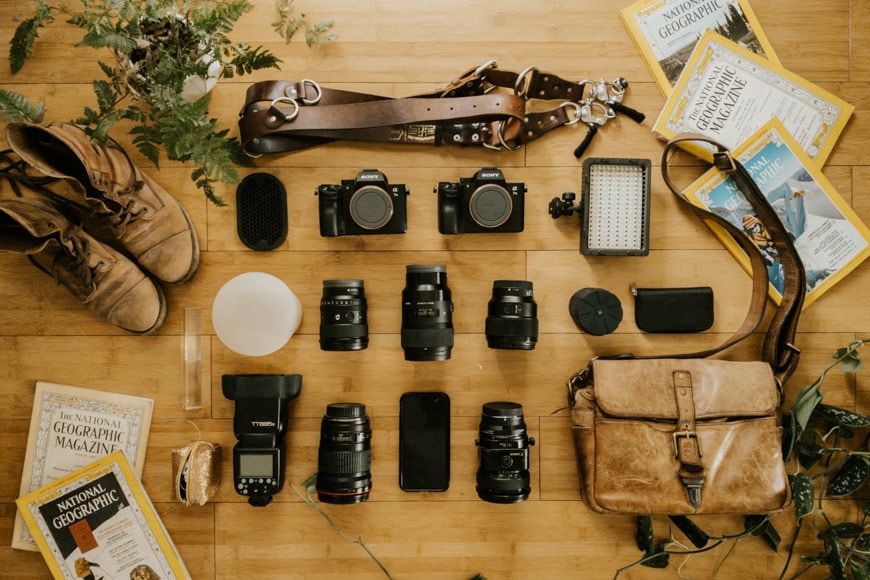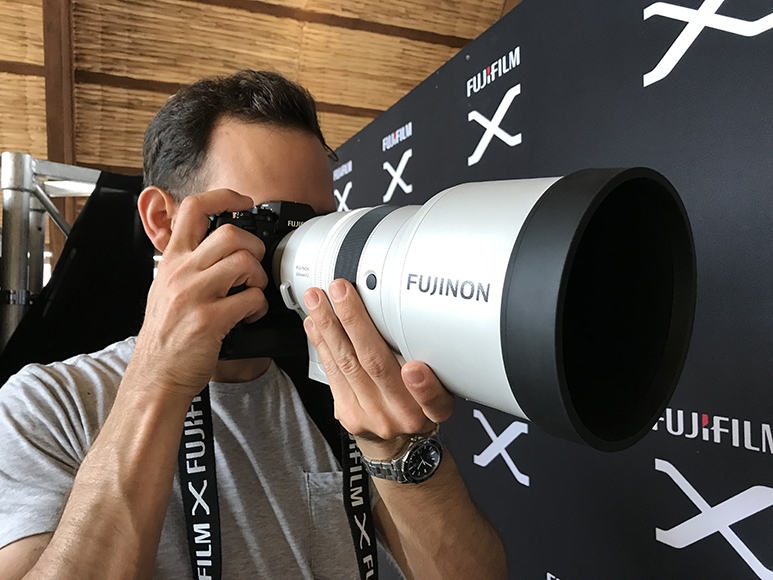
Why You Need a Prime Lens for Your Camera
While zoom lenses are useful tools, I highly recommend you buy at least one prime lens. Discover why fixed focal length lenses are so essential.
Learn | By Mark Condon
I don’t want to get into a prime vs zoom lens debate in this article, but it’s important you understand one thing…
By the end of this guide, you’ll understand why buying a prime lens can transform your photography.
In all my years of photography, using prime lenses has helped me advance more than anything else.
Sure, I own several zoom lenses and love using them too.
However, prime lenses are what I reach for first in almost every photography situation.
In this guide, I’ll explain the benefits of using prime lenses, which ones to buy and how you should be using them.
Let’s get stuck in.
Table of Contents
What is a Prime Lens?

Wedding photographers love using prime lenses for the unique look of the images | Safeena Padder on Shotkit
The definition of a prime lens is a type of camera lens that has a fixed focal length.
You’ll also hear a prime lens talked about as a ‘fixed focal length lens’.
This means that unlike zoom lenses, which allow you to adjust the focal length to zoom in or out on a subject, prime lenses have a set focal length that cannot be changed.
At first glance, this might seem like a limitation, but it’s actually one of the prime lens’s greatest strengths.
In the past, prime lenses were thought to have superior image quality, often producing sharper images than zoom lenses. In recent years, this is arguably less so, but it’s still a consideration.
Prime lenses also tend to have larger maximum apertures, which makes them faster and better suited for low-light photography.
For most photographers, the main benefit of prime lenses is the more affordable access to larger maximum apertures, which help to blur the background, giving a photo a ‘professional look.
In terms of weight, prime lenses are usually lighter than zoom lenses, making them a more comfortable choice for prolonged use.
With a prime lens, you can’t zoom in or out to adjust your framing. Instead, you have to physically move closer or further away from your subject.
While this might seem inconvenient, it can actually enhance your photography skills.
It encourages you to think more carefully about your composition and how you’re framing your subject, which can lead to more creative and thoughtful photographs.
In my experience, this is what made me grow as a photographer more than anything else.
Telephoto lenses with their variable focal length offerings made me lazy since a simple twist of the lens barrel could change the composition of a photo.
However, by using a fixed lens, I learned to zoom with my feet and get closer to the subject to alter the composition.
In essence, a prime lens is more than just a piece of equipment.
It’s a tool that can challenge your creativity, enhance your photographic skills, and ultimately transform your photography.
What’s the difference between a telephoto lens and a zoom lens?

A telephoto lens can also be a prime lens – me with the ridiculous Fujifilm XF200mm f/2
A telephoto lens is a type of lens with a long focal length, typically above 70mm, used to magnify distant subjects. If it has a fixed focal length, it can be a telephoto prime lens.
A zoom lens, on the other hand, is a type of lens that allows you to change the focal length, offering a range from wide-angle to telephoto.
So, while a telephoto lens can be a zoom lens if it covers a range of long focal lengths, not all zoom lenses are telephoto lenses.
Note also that zoom lenses with fixed maximum apertures (such as the Canon RF 28-70mm f/2 or Nikon 24-70mm f/2.8) are still zooms.
i.e. the constant aperture has nothing to do with the lens being a prime lens or not.
What are the Benefits of Using a Prime Lens?
- Often cheaper than zoom lenses
- Larger maximum apertures
- Lighter in weight
- Smaller
- Great for low light situations
- Can enhance depth of field control
- Encourages thoughtful composition
- Requires physical movement for framing
- f/1.4 and faster can be expensive
- May require more lens changes
- Less versatile than zoom lenses
Above, I’ve listed the main pros and cons I’ve found when using prime lenses.
Most of them are self-evident, but the one that I want to dig into further is the question of image quality:
Do Prime lenses really have better image quality than Zoom lenses?
Historically, prime lenses were often thought to have better image quality than zoom lenses.
This is because prime lenses have a simpler design with fewer moving parts, which can lead to less distortion and sharper images.
However, it’s important to note that lens technology has advanced significantly in recent years.
Many modern zoom lenses now offer image quality that rivals, and in some cases even surpasses, that of prime lenses.
But generally speaking, prime lenses still tend to offer superior sharpness and better performance in low light due to their wider apertures.
Another factor that isn’t usually talked about is the unique look that prime lenses can give, especially those with large apertures.
In my experience, I’ve found this to be the case with certain exotic fixed focal length lenses, such as the Nikon 58mm f/1.4 and the Canon 85mm f/1.2.
What are the Best Prime Lenses?
As always, ‘best’ is quite subjective when it comes to camera gear. In addition, most camera lenses in 2023 are pretty damn good.
My recommendations below include a selection of the best value-for-money prime lenses for beginners and some prime lenses for professionals.
Best Canon Prime Lenses
Budget:
Premium:
Best Nikon Prime Lenses
Budget:
Premium:
Best Sony Prime Lenses
Budget:
Premium:
Best Fujifilm Prime Lenses
Budget:
Premium:
Best Panasonic Prime Lenses
Budget:
Premium:
What is a Prime Lens Used For?

Canon and Nikon prime lenses | Jay Carrario on Shotkit
A prime lens is used for a variety of photography genres and situations.
It’s a versatile tool that can adapt to many different types of photography.
Now, let’s dive into some real-life examples based on my experience of using prime lenses in various situations.
As a portrait photographer, you might use a prime lens like an 85mm for its flattering perspective and ability to create beautiful bokeh, blurring the background and making your subject pop.
For wedding photography, a fixed focal length prime lens such as a 35mm f/1.4 or f/2 can be invaluable. The wide aperture is great for blurring ugly backgrounds or giving you more stops of light during a dimly lit reception.
Event photographers often face challenging lighting conditions. A prime lens with a large aperture, like a 24mm f/1.4, can help you capture clear, sharp images even in dimly lit venues.
For landscape photography, a wide-angle prime lens, such as a 24mm, can capture sweeping vistas with edge-to-edge sharpness.
The fixed focal length can also encourage you to explore the scene more thoroughly to find the perfect composition.
In essence, a prime lens is a versatile tool that can enhance your photography, no matter the genre.
Why Limiting Yourself to One Focal Length Can Be a Good Thing

Using a prime lens can help simplify the photography process | Mitchell Stather on Shotkit
Having varying focal lengths in one zoom lens can be comforting, but it can also limit your creativity by giving you limitless options.
Limiting yourself to one focal length with a prime lens can actually be a good thing. It might seem counterintuitive, but hear me out!
When you’re using a zoom lens, it’s easy to stand in one spot and zoom in and out to frame your shot.
But with a prime lens, you don’t have that luxury. You have to move around to find the best composition.
This forces you to think more about your shot.
You have to consider the angles, the framing, and how the elements in your scene interact with each other.
In other words, you become more engaged with your photography – you’re not just passively zooming in and out.
You’re actively exploring your scene and finding the best way to tell your story… and that’s when the magic happens.
That’s when you start to see things you might have missed if you were just standing in one spot, zooming in and out.
That’s when you start to create images that are truly unique and personal.
So, while a prime lens might limit your focal length, it can actually expand your creativity.
And that’s a trade-off I’m willing to make and hope that you can consider it too.
You should think of telephoto lenses as a convenient and safe option.
When are Multiple Focal Lengths More Useful Than Prime Lenses?
There are certain situations where having multiple focal lengths can be more useful than a prime lens.
Let’s dive into a few examples.
When you’re shooting wildlife or sports, for instance, subjects can be unpredictable and far away.
A zoom lens allows you to quickly adjust your framing without needing to change your position or scare away your subject.
In photojournalism or street photography, situations can change rapidly.
Having a zoom lens allows you to capture a wide range of perspectives without needing to swap lenses.
When you’re travelling or hiking, carrying multiple prime lenses can be heavy and inconvenient.
A zoom lens can give you a range of focal lengths in one package, making it a more practical choice.
In essence, while prime lenses have their strengths, zoom lenses can offer versatility and convenience in situations where you need to adapt quickly or can’t carry multiple lenses.
It’s all about choosing the right tool for the job.
What Should Your First Prime Lens Be?
Many beginner photographers ask what is the most common prime lens, and the answer is the humble 50mm.
Also known as a nifty-fifty, a basic 50mm prime lens is inexpensive, compact and feather-light, with the marvellous ability to open up to f/1.8.
All the major camera brands have an f/1.8 50mm lens, and I highly recommend you buy one.
Using nothing but a 50mm prime lens can be a great learning experience – I did this as a 50-day photography project, with one photo every day.
It’s also a great lens to carry around as a backup since it’s small, light and great in low light.
Once you’ve had a look at a photo taken at f/1.8, you may not want to go back to your kit lens or zoom lens, which likely has a maximum aperture of ‘only’ f/4 or f/5.6.
Final Words
I stand by what I said at the start of this article – every photographer needs at least one prime lens.
I’ve owned and used various prime lenses over the years, but stick with 35mm and 85mm for the majority of my work.
Every time I use a zoom lens, it feels like cheating.
The only times I attach a zoom lens to my camera are when I’m on the sideline at my son’s soccer game, or if I can’t get close enough to the bride and groom during a wedding ceremony.
Whatever camera you own, I highly encourage you to invest in a prime lens – it could change your photography forever.
FAQs
What is a prime lens used for?
A prime lens is used for a variety of photography genres, offering superior image quality and larger apertures, making it ideal for low-light situations and creating beautiful bokeh.
What is the difference between a prime lens and a normal lens?
The difference between a prime lens and a normal lens lies in the focal length. A prime lens has a fixed focal length, while a “normal” lens refers to a lens with a focal length roughly equivalent to the human eye’s field of view, typically around 50mm.
Why do prime lenses look better?
Prime lenses often look better because they tend to produce sharper images with less distortion. They also have larger maximum apertures, which can create a pleasing bokeh effect in the background.
What is a drawback of using a prime lens?
The main drawback of using a prime lens is its lack of versatility. The fixed focal length means you can’t zoom in or out to adjust your framing, which may require you to change lenses or physically move closer or further from your subject.













